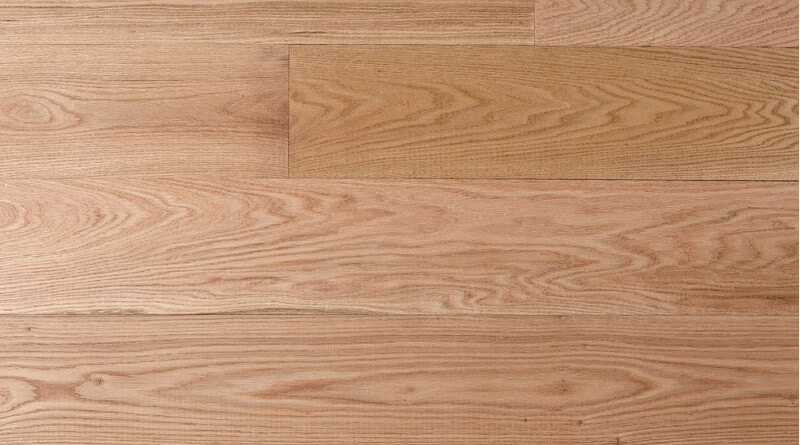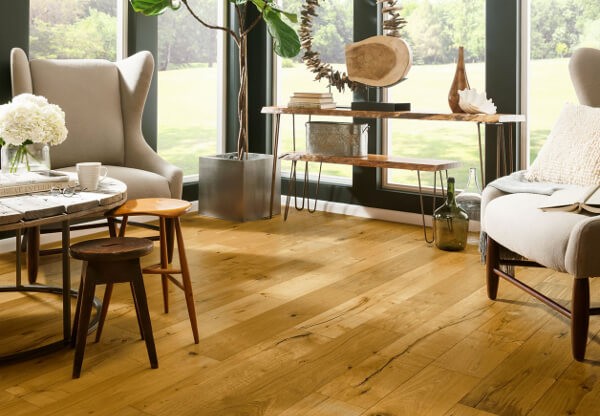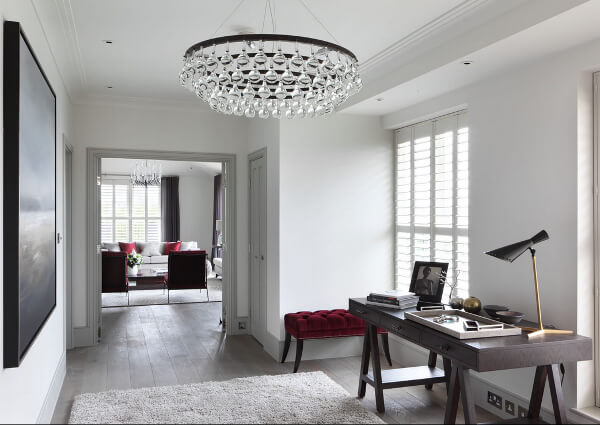Our series on domestic hardwood flooring would not be complete without an in-depth exploration of oak hardwood flooring (both red and white oak flooring), its pros and cons, the different looks you can achieve with it and the best brands and prices on the market.
 Source: www.builddirect.com
Source: www.builddirect.com
Quick Links: Types | Colors & Stains | Durability | Options | Pricing & Reviews | Pros & Cons | Other Considerations
Oak flooring is the most popular and most widely available hardwood flooring in the USA, prized for its aesthetic versatility – full of character and easy to stain – as well as its strength and stability.
Oak hardwood floors have remained a constant best seller for decades, so oak is a clear contender for any home remodeling project. Read on to find out if oak wood flooring is the best option for your home.
Different Types of Oak
The first thing to be clear about when you’re considering oak floors is that there are two main types: red oak flooring and white oak flooring. There are a few technical differences between them, which we will discuss in more detail here. But the main thing to consider first is that in their natural state they do have different colors and graining, which will affect how they take stain and how they will look in your home.
 Source: www.armstrongflooring.com
Source: www.armstrongflooring.com
Engineered white oak has been textured with deep etch marks and stained with a natural tint to create a warm, rustic feel.
Oak Flooring Colors, Stains and Finishes
In essence, red oak flooring has a pinkish tone and a more patterned grain, whilst white oak flooring has a yellowish tone and a less busy aspect to its grain.
If you’re looking for a floor that has a great deal of character in the grain, then red oak is best for you. Because both types are very attractive in their raw state, oak flooring is often best presented with just a clear or very lightly tinted sealant.
However, both types of oak can be stained and, of course, much of the oak flooring on the market is already stained and pre-finished by the manufacturers.
Being such a popular hard wood flooring, you will find oak wood floors of both types available in a huge range of stained tones, from golden tans, through chic grays to deep chocolates.
At the moment, rustic style flooring is a popular, and characterful oak is perfect for this, so you’ll see a lot of distressed, etched and weathered finishes and textures such as hand scraped, or wire brushed oak flooring for sale.
Some retailers also stock unfinished oak flooring. However, bear in mind that if you’re planning on doing an on-site custom stain, white oak will stain a bit more evenly than red oak; in either case, getting experienced pros to do the job is worth it to ensure best results.
Also note that some stain colors work better than others depending on the type of oak. Gray stains, for example, don’t look that great with the underlying pink tones of red oak, but do look good with the yellow tones of white oak. Whilst the more varied, patterned grain of red oak can be beautifully highlighted if you use a dark walnut stain.
 Source: smithouseconstruction.com
Source: smithouseconstruction.com
Dark walnut stain brings out the gorgeous grain patterns in this red oak flooring.
Because of oak’s lovely grain and ease of staining, it is a very versatile option that works with all kinds of décor. Oak flooring also has a timeless, classic feel to it, which makes it a great investment as it can be adapted over time to suit changing décor.
For a full explanation of the differences between red oak and white oak flooring read our Red Oak Vs White Oak post
Oak Hardness and Durability
In terms of hardness, with a Janka rating of 1290 red oak is the industry standard, meaning that you’ll hear comparisons of hardwoods as being less hard or more hard than red oak.
In actual fact, with a Janka rating of 1360, white oak is slightly harder, but there’s not that much in it, and both types of oak hardwood flooring are known for being durable and good options for busy households with lots of traffic.
Another bonus for busy households is that the inherent patterns of the grain in red oak make it a better choice as the patterns will hide scratch and dent marks more.
In terms of durability, it’s worth pointing out that only white oak is resistant to rot and therefore can also be used outside (for example as patio furniture).
However, as far as oak flooring is concerned, both types are very durable, plus technological advances in engineered oak hardwood production means it can be installed in any part of your home, even in bathrooms and basements.
Oak Flooring Options
As with most hardwood flooring, oak flooring is available in several options:
- Solid Oak flooring is usually 3/4” (19mm) thick and with plank widths usually range from 3” to 6”. Solid oak is available in parquet flooring styles too.
- Engineered Oak flooring is where a thin wear layer of real oak wood is adhered to a plywood base, ideal for using below-grade in areas like basements as it is more stable than solid wood. Engineered oak planks are either 3/8” or 1/2” thick depending on the manufacturer; there is a variety of plank widths too, most often 5” but some manufacturers are making engineered oak planks of up to 7.5” or even 8”.
- Laminate Oak flooring is made by adhering a 3D photographic image of oak wood to a composite wood base. Laminate planks tend to be around 8 – 12 mm thick, and vary in widths from as little as 3” to up to 8” depending on the manufacturer
All these oak floor options, even the laminate ones, are available in a range of stain colors and aesthetic finishes and different textures including smooth, antiqued, distressed, wire brushed and hand scraped.
- Reclaimed Oak flooring is another option to consider as, given the popularity of oak over the centuries, it is one of the wood species that are widely available from flooring reclamation yards. Dimensions will vary depending on where the oak has come from. Using reclaimed oak is a great way to get an instantly characterful, aged floor.
 Source: www.siberianfloors.com
Source: www.siberianfloors.com
White oak with a barely-there white tine oil finish brings warmth and character to this simply decorated home.
Oak Flooring Costs and Brands
There are a large number of lumber yards and small manufacturers that sell oak flooring direct or via local retail outlets, so it’s worth checking in your local area for those too. In the larger home improvement stores you are likely to come across some of these top brands:
- Solid Oak flooring: Top brands include Bruce, Armstrong, Shaw Floors, Mohawk, Somerset Floors, Jasper and with a huge range of prices, anything from as little as $3 per square foot up to $20 per square foot. The cost very much depends on the style and finish of the oak flooring.
- Engineered Oak flooring: Brands to look out for include Bruce, Armstrong, Anderson, Shaw Floors, Home Legend, Kährs and Jasper with prices from between $2 to $11 per square foot.
- Laminate Oak flooring: Brands that we would recommend include Bruce, Armstrong, TrafficMASTER, Lamton, Mannington and Pergo with prices as low as $0.70 per square foot to around $4 per square foot.
Where to buy:
Home Depot sells Home Legend, Mohawk, Bruce and Shaw solid hardwood and engineered hardwood, along with Pergo and TrafficMASTER laminate flooring.
BuildDirect sells Armstrong, Bruce, Kahrs and Jasper solid and engineered hardwood. BuildDirect’s laminate wood floor brands include Armstrong and Lamton
Wayfair sells Bruce, Mohawk, Shaw, Armstrong and Somerset solid and engineered hardwood. They also stock a good selection of Mannington and other oak laminate flooring.
Oak Flooring Pros and Cons
If, so far, it seems that oak flooring is too good to be true, well that’s not far from the truth; but just like any hardwood flooring there are cons as well as pros to installing oak floors.
Advantages of oak flooring are:
- Popularity/ Good Investment: as oak flooring is one of the most popular hardwood flooring choices, it makes for a very good investment. It’s a well known fact that houses are more likely to sell if they have hardwood flooring and, because oak flooring has such a wide appeal, it’s a no-brainer if you’re thinking ahead to selling.
- Versatile and Timeless: oak flooring is a classic choice, and has a timeless aesthetic that is also very versatile – it will work with almost any décor. It adds authenticity to period properties and gives warmth and character to contemporary, new buildings
- Character: the grain and knot patterns in oak hardwood give this flooring lots of character, which is part of its appeal.
- Color: both red and white oak have a lovely, natural color; and equally both can be stained to create different looks, from weathered whitewash to on-trend grays to traditional walnut stains.
- Options and Availability: because it is so popular, oak flooring is available in all kinds of sizes, styles and options, including solid hardwood, engineered hardwood and laminate.
- Cost: again, because it is the most popular domestic hardwood, you can find oak flooring to suit any budget, from $1 per square foot for decent laminates to $20 per square foot for top-end solid oak flooring.
- Environmentally friendly: oak flooring is farmed and produced domestically in the USA, so it has a lower carbon-footprint than exotic hardwoods; look for FSC certification that ensures that the oak flooring you’re purchasing has been cultivated in a sustainable, responsible way. Reclaimed oak flooring is another green option.
 Source: www.element7.co.uk
Source: www.element7.co.uk
Stunning gray stained oak flooring shows just how versatile oak flooring can be.
Disadvantages of oak flooring are:
- Too Popular? If you’re looking to create a more signature interior design or are looking for something that isn’t practically everywhere, then oak flooring is probably not the right choice for you. If you still want to go with a domestic hardwood, perhaps consider Hickory hardwood instead.
- Too Traditional? Whilst oak flooring goes well with most design choices, you might find that alternatives such as cement, terrazzo or tile offer more cutting edge options and would be better suited to your personal style, or would be a better match for slick, contemporary architecture.
- Noisy: This is a general issue with most hardwoods, not specifically oak, but nevertheless worth noting. Oak flooring doesn’t offer the soundproofing qualities of other flooring materials such as carpet or cork.
- Reactions to Temperatures and Humidity: again, not a specifically oak issue, but true of all hardwood flooring – oak planks, particularly solid ones – are prone to expanding and contracting slightly as temperature and humidity levels increase and decrease. The result can be that small gaps appear between floorboards, and that you get a floor that creaks from time to time (most often at night, when the temperature cools). Engineered oak flooring reacts less to these fluctuations. Allowing your floorboards plenty of time to acclimatize to its environment before installation can help, as can laying good quality underlayment.
Further Oak Flooring Points to Consider
Oak flooring is very durable and makes good sense for a long-term investment. But there are some provisos to get the best from this investment.
First, we recommend that you buy the best quality oak flooring you can afford and use professional, experienced installers to ensure a good-looking, long-lasting result.
Secondly, be ware of trends: some might be worth going for and some probably should be avoided. Lately there has been a trend for wide or random width planks, and those are actually quite classic choices, so worth going for.
However, we would think twice about going for on-trend gray stain on oak flooring – whilst it certainly looks rather lovely right now, we’re not convinced it’ll be so popular in 25 years’ time. Sticking to a natural or warm brown tone is more likely to pay off for the long-term.
Finally, be sure to research in-depth the different manufacturing options before deciding between solid oak and engineered oak hardwood. Read our article here for more information about the pros and cons of engineered hardwood and of solid hardwood flooring.
 Source: lauxinteriors.com
Source: lauxinteriors.com
The natural tones of this red oak flooring are simply enhanced with a matt linseed oil seal.
The article or page: Oak Flooring: Reviews, Best Brands & Pros vs Cons (Red & White Oak) first appeared on the Home Flooring Pros website. Please update your links and bookmarks accordingly.
from Home Flooring Pros http://ift.tt/2I5AtAE
No comments:
Post a Comment